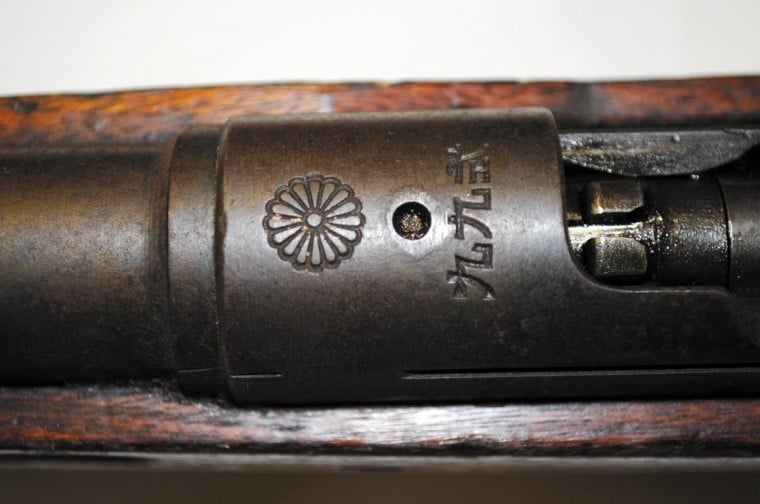

The top of the receiver is marked with the Imperial ownership seal, a “chrysanthemum”. Markings: There is no visible import mark. The bayonet is a Type 30 with a straight.Īction Type: Bolt Action, Internal Magazine
Type 99 arisaka serial numbers serial number#
The serial number would seem to place it somewhere in the middle of the.


These rifles include: The Type 30 Long Rifle and Carbine, the Type 35 Rifle, the Type 38 Long Rifle, Short Rifle, and Carbine, the Type 44 Carbine, the Type 97 Sniper Rifle, and the Italian Type I Long Rifle. Below are the markings on rifles in 6.5 Japanese Caliber manufactured from 1897 until the mid 1940's. Of course, many more were also surrendered after the war, but not having a "mum" to grind off, it is not so obvious.7.7 Japanese caliber, 26' barrel, serial number 5619. Smaller and easier to carry, many combat captures were tucked into a duffle bag or mailed home (prohibited, but it was fairly common). Only after the war, when American troops were sent to Japan were large numbers of souvenir rifles made available to Americans, and it is those rifles that are in American collections today. (And no one was going to throw away his M1 and keep a Type 99 souvenir for fighting!) For most of the war, troops who had captured one island were shipped on to the next and were in no position to carry two rifles. Mostly, the Marines or soldiers who had picked them up on the battlefield from dead Japanese (very few Japanese soldiers surrendered), sold them to sailors on the ships who had the means of bringing them back. In truth few Japanese rifles brought back were actually combat capture, and even fewer were brought back by the men who captured them. (This is a variation of the "bayonet and rock" story.) I heard the "Harry Truman" story from only one vet, but he was so convincing that I could see someone believing it.) (That was still in the middle of the war - we were killing Japanese but couldn't offend them!!?) Another was that Japanese units carried grinders with them so they could remove the crest before engaging in a "last ditch" battle. But a lot of vets had already told tales of how their souvenir rifles were captured in hand-to-hand combat, so they had to quick invent a story that would explain how the crest was ground.Ī common one was that Roosevelt/Truman/MacArthur/Nimitz ordered Americans to grind the crests aboard ship to avoid offending the Japanese. Many of those stories seem to have begun when folks began to realize that a ground crest meant a surrendered rifle. When I asked about the ground crest, he said the rifle had the "mum" when he brought it back, but Harry Truman kept track of all those rifles and sent the FBI to seize the gun when they brought it back the crest had been ground!!! The most ludicrous was the vet who told me how he captured his Type 99 in hand to hand combat with Tojo himself. True, field troops who knew they were going to die might have marked through the mon with a bayonet, but it seems more likely to have been done to surrendered rifles when no better method was available.Ī lot of silly stories surround that issue. Surrendered how? It is reasonably certain that when rifles were taken from depots in Japan and some other areas and turned over to the allies, Japanese workmen were allowed (by MacArthur) to deface the imperial "mon" to allow the Emperor to save face by not having his crest disgraced.īut the idea that Japanese who were captured or killed in action carried grinders around so they could remove the "mum" as they fell, seems a bit unlikely.


 0 kommentar(er)
0 kommentar(er)
